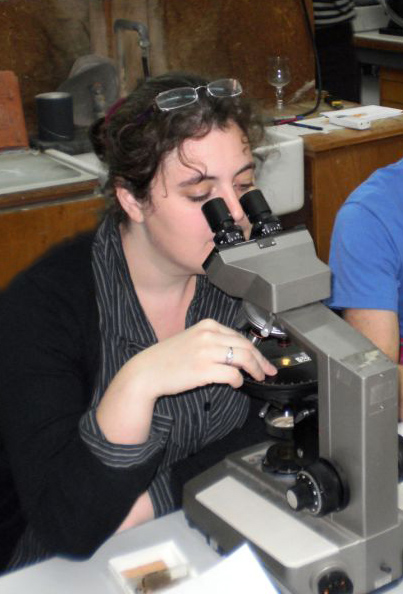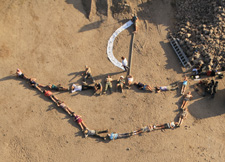Paula Waiman Barak

is currently working on her Ph.D. thesis: "Economic Interactions of Phoenicia during the Iron Age I - Iron Age 2a, an Optical Mineralogy Study". The research is held at the Department of Archaeology, the University of Haifa and supervised by Dr. Ayelet Gilboa (the University of Haifa) and Prof. Yuval Goren (Tel Aviv University). All ceramic analysis is conducted at the Laboratory of Materials in Archaeology (dir. Prof. Sariel Shalev), the University of Haifa. This work is academically supported and financed by the Tel Dor expedition.
Paula's study focuses on a long overlooked area of research of the trade relations between the Phoenician sites and other geographical regions during the early Iron Age. The study includes mainly settlements on the Levantine coast and, to a lesser extent, sites in the Jezreel Valley, the Galilee, and the Central Highlands. The harbor site of Tel Dor located on the Carmel coast serves as a unique case study for mapping the commercial interchange between these ancient societies. Fabric analyses of various transport vessels (jars, flasks, pithoi) allow for tracing the route of the vessel from its deposition site back to the provenance of its raw material (clay source), which is often also the place of manufacture. Various technological observations of the production of ceramics have enabled us to outline the diachronic migration of traditions. The scientific method used in this study is the optical-mineralogy (petrographic).
Up till now, ca. 400 samples have been collected for Paula's dissertation, mostly from the early Iron Age assemblage of Tel Dor but also from Ein Hagit, Tel Dan, Tel Keisan, Tel Rehov, Megiddo, Tel Rekesh and Tel Zeror. Additional assemblages will be sampled this year. The collected information so far reveals new insights of pottery production centers and distribution, as well as trading patterns of Phoenician pottery during the early Iron Age.
Paula is also working on the publication of the Egyptian pottery from Dor dated to the Iron Age 1 - Iron Age 2a. Been one of the largest assemblages of the Egyptian pottery outside Egypt, it comprises wide range of vessels (jars, bowls and cooking pots). In light of this study, the nature and extent of Egyptian relations with the Phoenician webs of commerce seem to be more extensive and complicated than previously suggested.
To expand her understanding on commonly used fabrics for Levantine pottery Paula is conducting petrographic analysis for different projects such as Persian and Hellenistic pottery from Tel Dor, Persian Phoenician jars from Achziv, Byzantine clay pipes from the Negev, glazed Muslim pottery from Tiberias, Early Bronze Age pottery from Hurvat Meithe and Early Iron Age bell-shaped bowls from Tel Zeror. All projects are in different stages of publication.
Paula participated in the excavations of the sunken harbors of Caesarea and Liman Tepe (Turkey) as well as of several wooden wrecks in the Tantura (Dor) lagoon. She joined the Tel Dor project in 2007 and worked on ceramic assemblages ever since.
Contact
The Laboratory of Materials in Archaeology, University of Haifa, the Leon Charney School of Marine Sciences, Multipurpose Building: room 218
Tel. +972 (0)4 8288138
